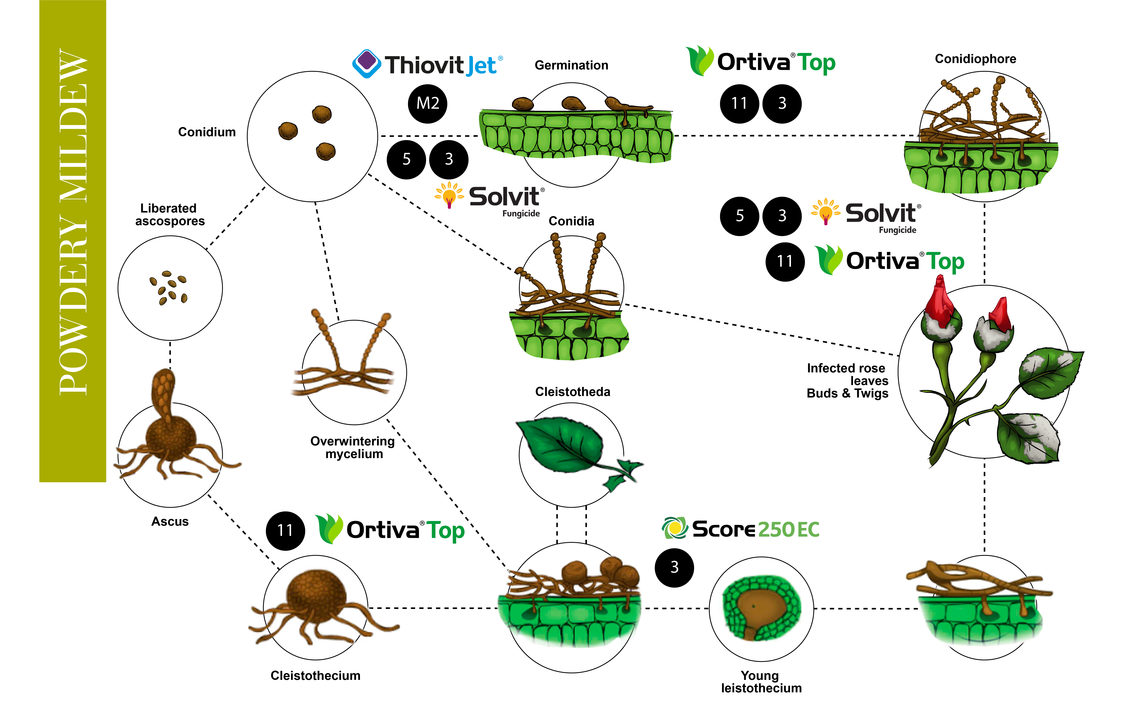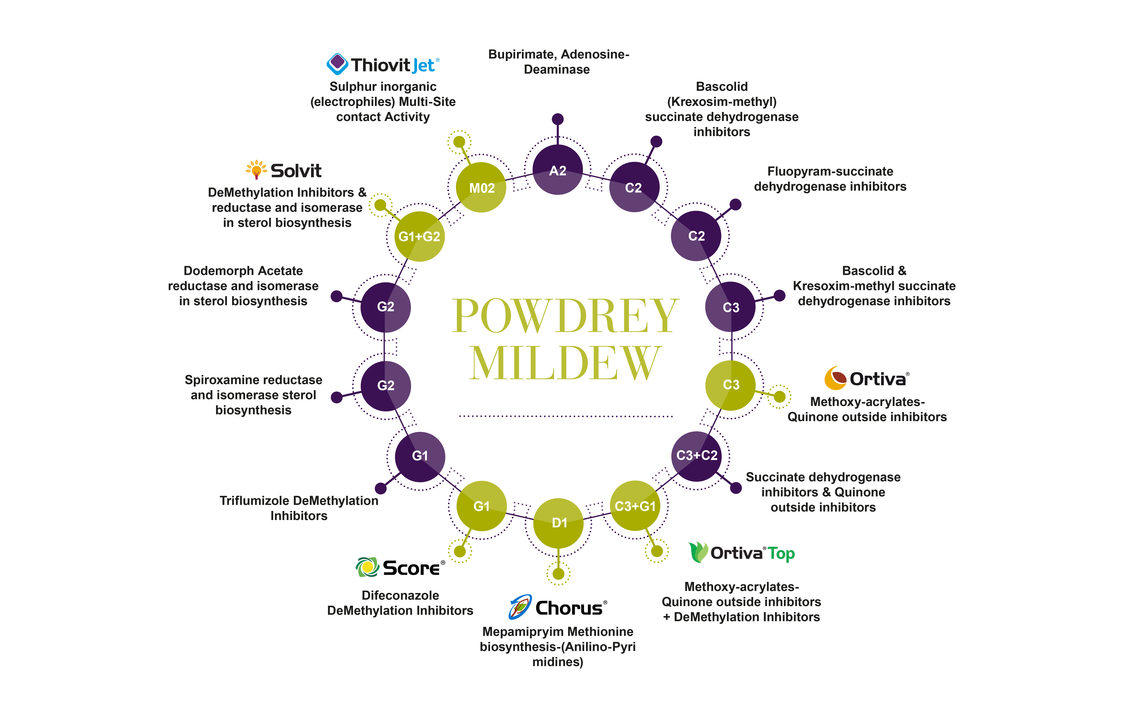Symptoms
The symptoms appear on leaves, shoots, buds, thorns, peduncles, and flowers as a powdery, whitish growth (mycelium, conidiophores, and spores) of the mildew fungus. Severe mildew damage reduces leaf growth, the aesthetic value of plants, photosynthetic efficiency, and thereby plant growth. Plants can be severely stunted if they are heavily infected early in the growing season. When the environmental conditions are favorable, the affected leaves may fall prematurely.
Management
Pruning infected shoots, greenhouse sanitation, adequate ventilation, and fungicide applications.
Powdery Mildew Life Cycle
Understanding a disease’s life cycle is vital to maintaining control of your crops. Below is the powdery mildew life cycle, to help you get maximum control, the best products from our range have been incorporated.

Managing resistance
The mycelium of powdery mildew on the leaf looks like a dry white powder. The name “powdery mildew” is very descriptive and sums up the fungus’s appearance on the leaf surface very well. The fungus does not like moving water such as rain or irrigation. It is a fungus that can infect many species in almost any floriculture crop. Powdery mildew doesn’t ‘destroy’ the plant, but is more of a parasite, which could ultimately result in the death of heavily infected plant material. For the germination of the spores, moisture is not essential, which is why the fungus is also difficult to manage by controlling the environment.
To prevent a crop from developing resistance it is important that you alternate between the different active ingredients. It is important to pay attention to the mode of action the product has. Rotation of products is a key strategy but it’s important those products have different FRAC codes, as this can reduce further resistance development. Ensure your program takes this into account. If you are in a situation where products with the same mode of action are applied twice in a row, moving to another product with a different FRAC group becomes even more important.
































